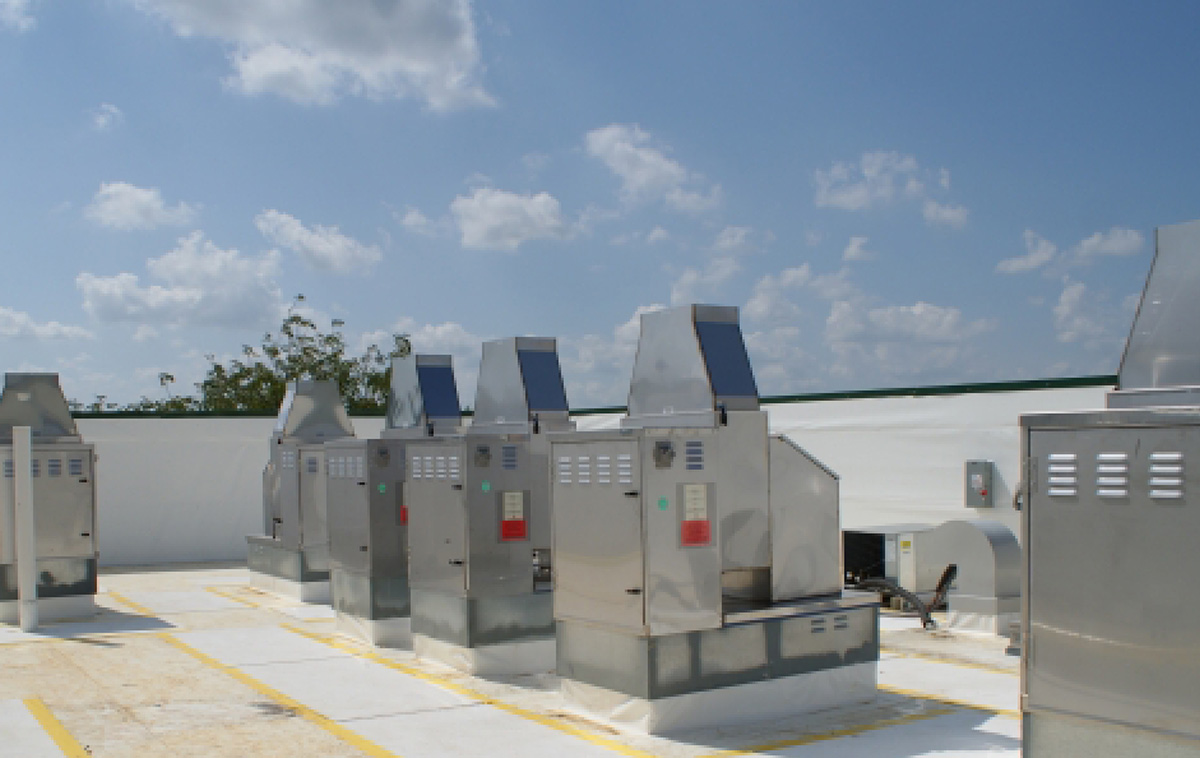This article will provide the fundamentals of fan behavior, commonly known as “fan laws” in a system, and how a mechanical engineer selects the proper fan. Most manufacturers of fans have selection software that automates the selection process.
The best advice to a Ventilation Engineer is to ensure that they are fully conversant with the 3 primary Fan Laws. This article will deliver a general outline of the rules or laws that can predict fan performance in a given system.
Why are the Fan Laws important? As an example, let’s consider the fan curve typically provided by a fan manufacturer. This fan curve is usually measured at “standard” or other stated conditions. It is unlikely that a fan will spend its operating life at these identical conditions in real systems.

Furthermore, suction pressure variations, density changes, composition changes, etc. are common and can also affect how the fan will operate in the system.
The Fan Laws help us estimate how a fan will operate in a system at different speeds, fluid density (altitude, heated air, cold air,) impeller diameter (wheel size), etc. Once we have a basic understanding of these Laws, the performance of a fan can be calculated for various conditions.
The performance of geometrically similar fans of different sizes or speeds can be predicted with reasonable accuracy for practical purposes using the Fan Laws. A higher level of accuracy would require the effects of, say, the viscosity of the gas, surface roughness of the fan, etc., also be considered. However, depending on the level of accuracy required, this may not be necessary for many fan calculations.
One point to note is that the Laws apply to the same point of operation on the fan curve. They cannot be used to predict other points on the fan’s curve. If different conditions exist, it would be good to run those variables through the software and see what impact it has on fan performance.
The fundamental Fan Laws governing fan performance are generally only valid for a fixed system with no changes in airflow characteristics in the system or changes in aerodynamics.
As we know, the movement of air through a system causes friction/resistance between the air molecules and their surroundings. Energy is therefore required to overcome this resistance. The faster the air moves through the system, the greater the resistance imposed to flow, and the more energy is needed to deliver the air through the system. This energy is described in terms of pressure. In general, the pressure required to overcome the resistance is referred to as “static pressure.” The pressure that results in the air velocity is described as “velocity pressure,” and the combination of these two values is often referred to as “total pressure.”

Popular Misconceptions
- You want twice the airflow, so you double the fan speed? Correct
- You want twice the airflow, so you double the pressure drop? Incorrect
- You want twice the airflow, so you double the power required to run the fan? Incorrect
Similarly,
- You want half the airflow, so you halve the fan speed? Correct
- You want half the airflow, so you will get half the pressure drop? Incorrect
- You want half the airflow, so this must halve the power required to run the fan? Incorrect
The Fan Laws
No.1 Volume (airflow) varies DIRECTLY with the speed of the fan
No.2 Pressure varies with the SQUARE of the speed of the fan
No.3 Power absorbed varies with the CUBE of the speed of the fan
For those who love formulas, here are the relevant ones for the three laws mentioned above.

V1 = Original air volume
V2 = New air volume
N1 = Original fan speed
N2 = New fan speed

P1 = Original pressure
P2 = New pressure
N1 = Original fan speed
N2 = New fan speed

K1 = Original power absorbed
K2 = New power absorbed
N1 = Original fan speed
N2 = New fan speed
Understanding the FAN LAWS is the basis of all ventilation design and commissioning.
Should you require help selecting a commercial kitchen exhaust fan, the experts who manufacture these types of units can guide you on the proper selection needed to meet your requirements.
Read another article relating to HVAC Systems – Using your HVAC system to build your restaurant’s brand
Subscribe to kitchenventilation.com
Stay up to date by subscribing to Halton’s Commercial Kitchen Ventilation Blogs by entering your email address to subscribe and Halton will provide you with the latest information on commercial kitchen exhaust hoods, pollution control units, air handling, and safety systems. You will receive notifications of new posts by email.




